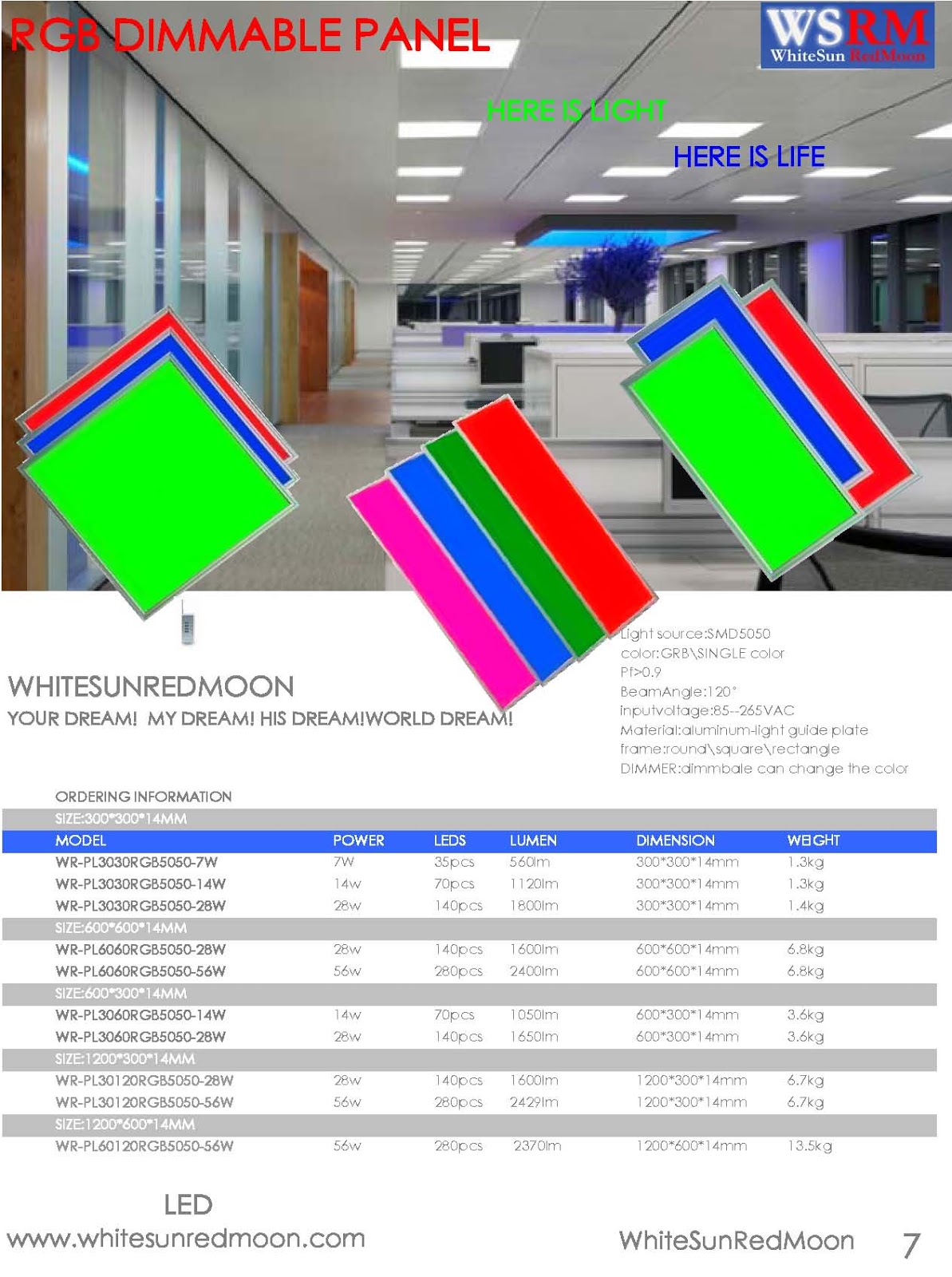www.whitesunredmoon.com
WSRM---LEDlights and CFLs dimmer!
We won’t rest until we’ve explored every way LEDs and CFLs differ! This post is part of a series doing just that. So far we’ve covered everything from the basics, like rated-life and energy-efficiency to more complex topics, like how each source performs in cold temperatures.you will read the series introduction in the next period of time.
|
LEDs and CFLs. To the untrained eye, they might just seem like comparable alternatives to the incandescent light bulb. But when you dive a little deeper, you’ll find that they’re very different.
Dimming. In a world where customization is king and energy-saving is of ever-increasing importance, dimming lets you have both. Putting your lights on dimmers saves electricity, using 10% less power when you dim the lights just 10%. (And more if you dim them lower.) Dimmers also let you tailor the lighting scheme to whatever you’re doing.
But, are LEDs and CFLs any good at dimming? Turns out there’s a bit of a discrepancy…
Here’s what we know:
It’s harder to dim LEDs and CFLs, because they don’t use the standard tungsten filament to generate light. But, every week more and more dimmable LED lights are introduced into the marketplace. In fact, a small number of LED lights are even beginning to mimic the way incadescents look when you dim them; they change color from white to yellowish-white to orangish-white to reddish-white.
CFLs, however, due to the very nature of their technology, are difficult to dim. They often need a special dimmer control and even then, the CFLs seem to blink and can suddenly turn off near the lower end of the dimmer range.
So, if dimming is important to you, LED light bulbs are your best energy-efficient choice.
www.whitesunredmoon.com
http://zgledn.yglm.mobi/
SALES CONTACT
ITALY
Torino
39011redmoon1@myledonline.com
Rome
3906whitesun1@myledonline.com
SPAIN
Barcelona
3493redmoon1@myledonline.com
GERMANY
Berlin
4930whitesun1@myledonline.com
FRANCE
Paris
331redmoon1@myledonline.com
ENGLAND
London
4420whitesun1@myledonline.com
RUSSIA
Moscow
7499redmoon1@myledonline.com
FINLAND
Helsinki
3589whitesun1@myledonline.com
NORWAY
Oslo
47whitesun1@myledonline.com
AUSTRIA
Vienna
431whitesun1@myledonline.com
39011redmoon1@myledonline.com
Rome
3906whitesun1@myledonline.com
SPAIN
Barcelona
3493redmoon1@myledonline.com
GERMANY
Berlin
4930whitesun1@myledonline.com
FRANCE
Paris
331redmoon1@myledonline.com
ENGLAND
London
4420whitesun1@myledonline.com
RUSSIA
Moscow
7499redmoon1@myledonline.com
FINLAND
Helsinki
3589whitesun1@myledonline.com
NORWAY
Oslo
47whitesun1@myledonline.com
AUSTRIA
Vienna
431whitesun1@myledonline.com
NETHERLAND
Amsterdam
3120whitesun1@myledonline.com
SWITZERLAND
Zurich
4144whitesun1@myledonline.com
TURKEY
Istanbul
90216whitesun1@myledonline.com
BELGIUM
Brussels
322whitesun1@myledonline.com
SWEDEN
Stockholm
468whitesun1@myledonline.com
HUNGARY
Budapest
361whitesun1@myledonline.com
SCOTLAND
Glasgow
44141whitesun1@myledonline.com
ICELAND
Reykjavik
354whitesun1@myledonline.com
SWITZERLAND
Zurich
4144whitesun1@myledonline.com
TURKEY
Istanbul
90216whitesun1@myledonline.com
BELGIUM
Brussels
322whitesun1@myledonline.com
SWEDEN
Stockholm
468whitesun1@myledonline.com
HUNGARY
Budapest
361whitesun1@myledonline.com
SCOTLAND
Glasgow
44141whitesun1@myledonline.com
ICELAND
Reykjavik
354whitesun1@myledonline.com






No comments:
Post a Comment